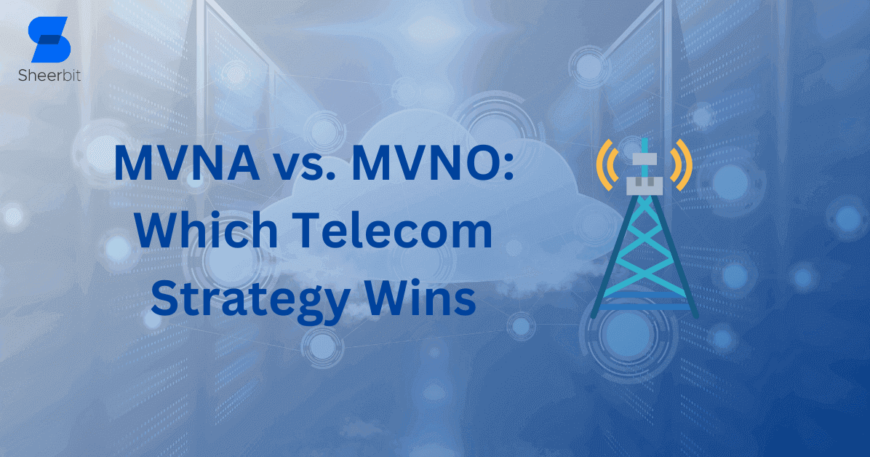For seasoned players and beginners, keeping up with changes in the rapidly evolving world of telecommunications is crucial. MVNA | MVNO are two essential techniques that have become more well-known in recent years. Which of these two strategies succeeds, even though they both have advantages and suit various company models? We’ll look at the benefits and drawbacks of MVNOs and MVNAs in this post to assist you in selecting the best telecom plan for your particular requirements.
Understanding MVNA | MVNO
Before delving into a thorough comparison, let’s first develop a clear grasp of what MVNAs and MVNOs are:
MVNA (Mobile Virtual Network Aggregator):
In the telecom industry, MVNAs effectively serve as intermediates or wholesalers. To combine the services and products of several mobile network operators (MNOs) onto a single platform, they collaborate with them. For MVNOs, MVNAs offer a simplified method by giving them access to several MNOs through a single integration point. This makes it easier for MVNOs to start and manage their mobile services.
MVNO (Mobile Virtual Network Operator):
MVNOs offer mobile services to customers without owning the underlying network infrastructure. Instead, they provide branded services while renting network capacity from MNOs. MVNOs can customize their products, rates, and packages to cater to particular client groups.
Now that we have a thorough knowledge of these two telecom methods let’s begin the comparison.
MVNA: The Strengths
Streamlined Access to Multiple Networks:
The most significant benefit of MVNAs is their capacity to give MVNOs access to several MNOs via a single integration. This saves MVNOs time and effort by removing the need to negotiate separate contracts with each MNO.
Reduced Operational Complexity:
On behalf of MVNOs, MVNAs manage many operational facets, including invoicing, customer service, and network maintenance. This makes managing a mobile service less complicated and enables MVNOs to concentrate on their core capabilities, such as marketing and user acquisition.
Economies of Scale:
Due to their history of working with MNOs, MVNAs can frequently get competitive rates for network access. MVNOs may see cost reductions as a consequence, enabling them to offer their customers reasonable prices.
Faster Time to Market:
The time it takes for MVNOs to deploy their services can be sped up by MVNAs. MVNOs may join the market more swiftly and begin making money sooner because many infrastructure and agreements are already in place.
MVNA: The Weaknesses
Limited Control:
Besides relying mainly on the MVNA for technical assistance and problem-solving, MVNOs employing an MVNA’s services may need more control over network infrastructure.
Dependency on MVNA:
MVNOs depend on their MVNA for network access, and switching MVNAs can be difficult and time-consuming. Long-term, this dependence may reduce flexibility.
Potential for Higher Costs:
MVNAs can save costs. However, they also have fees associated with their services. Depending on the pricing scheme, these costs could reduce the MVNO’s profit margins.
MVNO: The Strengths
Brand Independence:
MVNOs can establish their brand and customize their offerings for specific target areas. As a result, more significant differentiation is possible, and profit margins may be more significant.
Full Control:
Because MVNOs have more control over their network services, they may alter plans, features, and pricing in response to consumer demand and market trends.
Direct Customer Relationships:
MVNOs have direct client interactions, which gives them essential insights into consumer preferences and behavior. This can influence how products are developed and marketing plans.
Profit Potential:
Since they can choose their price, MVNOs that effectively target specialized customers or have distinctive value propositions can benefit from large profit margins.
MVNO: The Weaknesses
Complex Network Agreements:
To access network infrastructure, MVNOs must come to agreements with MNOs and uphold those agreements. This can take a lot of time, and it could cost a lot of money.
Higher Operational Burden:
MVNOs are in charge of handling customer service, invoicing, and network maintenance, all of which may be time-consuming and difficult.
Market Entry Challenges:
Gaining market share and competing with seasoned MNOs may take a lot of work for MVNOs entering a competitive telecom industry.
Which Telecom Strategy Wins?
Which telecom model succeeds, MVNA or MVNO relies on several variables, including the particular objectives and available resources of the telecom industry.
MVNA is the Winning Strategy When:
- The telecom business wants to provide services as soon as possible since speed to market is essential.
- The telecom company must have the necessary technological know-how to maintain network infrastructure.
- To guarantee countrywide coverage, access to many MNOs is necessary.
- The telecom corporation takes a more hands-off approach regarding network administration and customer service.
MVNO is the Winning Strategy When:
- The telecommunications corporation wants more control over its name, offerings, and costs.
- To effectively target specific market niches, customization and distinction are crucial.
- The telecom business has the knowledge and resources to manage operations and negotiate network agreements.
- For a firm to flourish, direct client interactions and insights are essential.
Your telecom firm’s precise objectives and capabilities will ultimately determine which model to use—MVNA or MVNO. Some telecom businesses may even mix the two approaches, using an MVNA initially to enter the market and then switching to an MVNO model as they gain traction in the sector.
In conclusion, one approach has no inherent superiority over the other in the MVNA | MVNO dispute. Comprehending your telecom organization’s requirements, available resources, and long-term goals is more important. By carefully weighing these variables, you may decide which telecom approach would help you prevail in the cutthroat telecom market. Success ultimately rests on your capacity to adapt, develop, and satisfy the changing needs of your consumers, regardless of whether you decide to be an MVNA, an MVNO, or a combination of the two.





